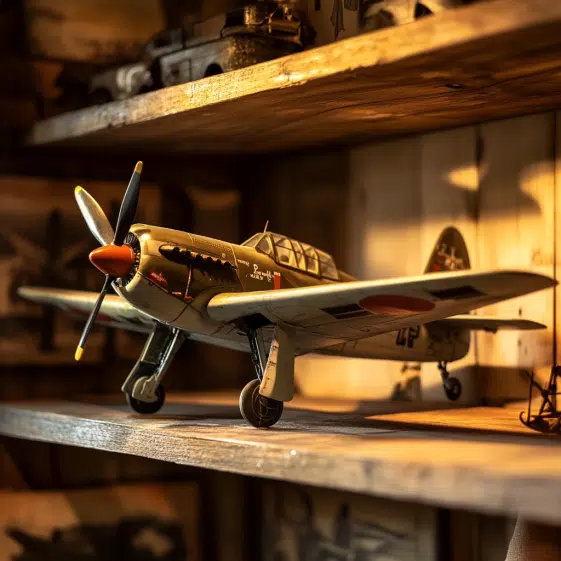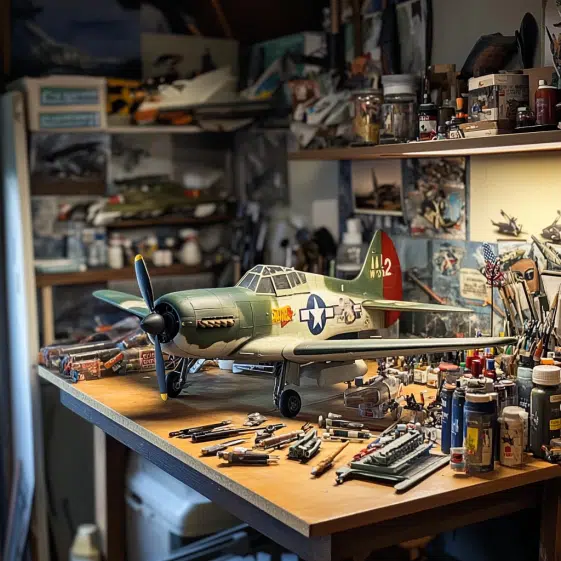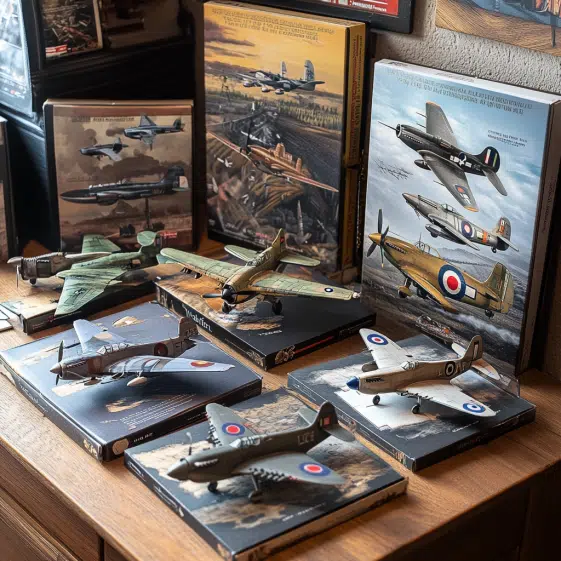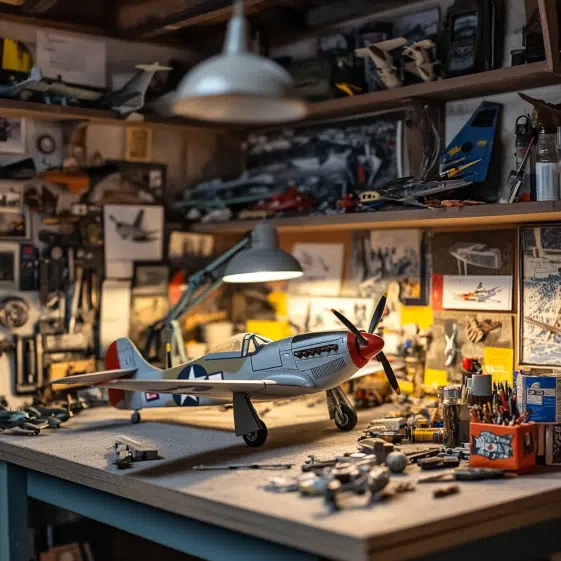Everything You Need to Know About WW2 Aircraft Models
Why WW2 Aircraft Models Are Popular Among Enthusiasts
WW2 aircraft models have captured the imaginations of hobbyists and collectors for decades. Their enduring popularity among enthusiasts is due to a variety of factors, from the historical significance of the planes to the intricate craftsmanship required to build them. Whether you’re drawn to the engineering behind the aircraft or the opportunity to create a piece of history, there are numerous reasons why WW2 aircraft models continue to be a favorite in the modeling community.
One of the main reasons WW2 aircraft models are so popular is their historical importance. World War II was a pivotal period in aviation history, with many of the aircraft used during the war setting new standards for design and performance. Planes like the Spitfire, the P-51 Mustang, and the B-17 Flying Fortress have become iconic symbols of the war effort and are frequently featured in books, films, and documentaries. For many enthusiasts, building a model of one of these famous aircraft is a way to connect with history and pay tribute to the brave pilots and crews who flew them. The opportunity to recreate these legendary planes allows collectors to immerse themselves in the rich history of WW2 aviation, learning about the technological advancements, strategies, and stories behind each aircraft. Explore the best deals on airline tickets for your next adventure. Plus, if you love aviation, check out our guide on Plastic model aeroplanec kits for a fun and creative hobby. Take your passion to new heights!

Another reason for the popularity of WW2 aircraft models is the wide range of aircraft available to modelers. From nimble fighters to massive bombers, WW2 aircraft models offer a diverse selection of planes to choose from. Some modelers prefer the sleek and fast designs of the fighter planes, like the German Messerschmitt Bf 109 or the American F4U Corsair, while others are drawn to the rugged, multi-engine bombers like the British Lancaster or the American B-29 Superfortress. The diversity of models allows enthusiasts to find something that appeals to their interests, whether they’re focused on a specific country’s aircraft, a particular theater of the war, or a certain type of aircraft. This variety ensures that there is always something new to discover and build, keeping the hobby fresh and exciting.
The level of detail and craftsmanship involved in building WW2 aircraft models also contributes to their appeal. Many modelers enjoy the challenge of recreating the fine details of these planes, from the cockpit interiors to the markings on the wings. The process of assembling and painting a model requires patience, precision, and an eye for detail, making it a satisfying and rewarding hobby. With the advancement of technology, many modern kits offer high-quality plastic parts and accessories, including photo-etched components and decals, that allow builders to create highly accurate and detailed replicas. For those who enjoy the creative aspects of the hobby, the chance to customize the model with weathering effects, such as scratches, dirt, and faded paint, adds another layer of realism and personal touch. Explore the best deals on airline tickets for your next trip. Find the perfect flight and learn more about different Jet models for a comfortable and efficient journey. Book with confidence today!
WW2 aircraft models also have a strong community of enthusiasts who share a passion for the hobby. Whether online or in-person, modelers often connect with others who share their interests in WW2 aviation. These communities provide a platform for exchanging tips, techniques, and experiences, as well as a place to showcase finished models. Many modelers also participate in competitions, where they can display their craftsmanship and learn from others. The sense of camaraderie and shared enthusiasm makes the hobby even more enjoyable, as it fosters an environment of learning, support, and inspiration.
In conclusion, WW2 aircraft models continue to be popular among enthusiasts for many reasons. The historical significance of the planes, the variety of models available, the opportunity for creative expression, and the sense of community all contribute to the enduring appeal of this hobby. Whether you’re a beginner just starting to explore the world of modeling or an experienced collector adding to your collection, WW2 aircraft models offer something for everyone and remain a timeless part of the modeling world. Discover the best deals on airline tickets for your next adventure. Enjoy a seamless travel experience and, for aviation enthusiasts, check out our collection of Planes toys. Fly high with fun!
How to Start Collecting WW2 Aircraft Models
Starting a collection of WW2 aircraft models is an exciting and rewarding endeavor for anyone interested in aviation history or model building. Whether you’re a complete beginner or someone with some experience in the hobby, knowing where to start and how to approach collecting can make the process more enjoyable and fulfilling. There are several key steps to take when diving into the world of WW2 aircraft models, from selecting your first kit to building and displaying your models.
The first step in collecting WW2 aircraft models is deciding which type of models you want to focus on. There is a vast array of aircraft from World War II, ranging from the iconic fighter planes like the P-51 Mustang and Spitfire to large bombers such as the B-17 Flying Fortress or the Lancaster. Understanding what interests you most will help narrow down your choices. For example, if you have a particular fascination with a certain country’s military, you might focus on American, German, British, or Japanese aircraft. Alternatively, you may want to explore a specific theater of war, such as the European or Pacific fronts. Taking the time to research the various aircraft used during the war can provide a clearer direction for your collection.
Once you have a general idea of the types of planes you want to collect, the next step is selecting your first WW2 aircraft model kit. As a beginner, it’s important to start with a model kit that matches your skill level. Some kits are more complex than others, so beginning with a simpler model can help you learn the basics of assembly without becoming overwhelmed. Look for kits that are labeled as “beginner” or “easy assembly,” which usually feature fewer parts and straightforward instructions. Popular brands such as Revell, Tamiya, and Airfix offer a variety of kits that cater to different experience levels, with many offering models of iconic WW2 aircraft.
When choosing a kit, also consider the scale of the model. The scale refers to the size of the model in relation to the actual aircraft. Common scales for WW2 aircraft models are 1/72, 1/48, and 1/32, with smaller scales like 1/72 being ideal for beginners due to their simpler assembly and lower cost. Larger scales like 1/48 and 1/32 provide more intricate details and are often favored by experienced modelers. However, they can require more skill and time to assemble. For those just starting, a 1/72 scale model is usually a good choice.

After selecting your first kit, it’s time to gather the tools and materials needed for assembly. The basic tools for building WW2 aircraft models include a hobby knife, tweezers, plastic cement or super glue, sandpaper, and a set of paintbrushes. Some modelers also prefer to use an airbrush for painting, which provides a smoother finish, but it requires additional equipment and practice. Be sure to follow the instructions provided with your kit, as they will guide you through the step-by-step process of assembling the model. Patience is key when it comes to building models, so take your time and ensure each piece is properly aligned and glued.
As you gain more experience, you can expand your collection by adding more detailed or advanced WW2 aircraft models. Many enthusiasts enjoy customizing their models with different paint schemes, weathering effects, and decals to replicate the look of real-life aircraft. Over time, you may also want to explore higher-quality kits, which may include additional components like photo-etched parts or resin upgrades that enhance the realism of the model.
Finally, once your models are built, displaying them is an important aspect of the hobby. Many collectors choose to display their models in cases to protect them from dust and damage while showcasing their work. A well-organized display can bring your collection to life and allow you to enjoy the models you’ve carefully assembled. You may also choose to photograph your models, participate in online forums, or attend modeling competitions to share your work with others who share your passion for WW2 aircraft models. Explore the best airline ticket deals and travel with comfort. Learn more about different aircraft and, moreover, check out our guide on Model Of planes to discover their features. Fly with confidence!
Top Brands and Models to Look for in WW2 Aircraft Models
When it comes to WW2 aircraft models, choosing the right brand and model is crucial for both beginners and experienced hobbyists. The quality of the model, its level of detail, and the ease of assembly can vary greatly between different manufacturers. Some brands are known for their high-quality kits, while others offer more affordable or beginner-friendly options. Whether you’re looking for accuracy, realism, or a specific historical aircraft, there are several top brands and models that stand out in the world of WW2 aircraft modeling.
One of the most respected names in the world of model building is Tamiya. Known for their attention to detail and high-quality plastic, Tamiya offers a wide range of WW2 aircraft models, catering to various skill levels. Their 1/48 scale P-51D Mustang is a popular choice among modelers. This iconic American fighter is famous for its role in the European theater of the war and is often regarded as one of the best fighter planes of WW2. Tamiya’s kit is well-regarded for its accuracy, ease of assembly, and finely molded parts, making it a great choice for those who want to start building more complex models.

Another well-known brand in the modeling community is Revell. While Revell is generally more affordable than some of the higher-end brands, they still offer models with great detail and accuracy. Their 1/72 scale B-17 Flying Fortress is a standout among WW2 aircraft models, known for its large size and impressive level of detail. The B-17, a heavy bomber used by the U.S. Army Air Forces, is one of the most famous bombers of WW2, and Revell’s kit does justice to this legendary aircraft. The model offers great value for both beginners and intermediate modelers, thanks to its straightforward assembly and relatively low price point.
Airfix is another well-known brand that has been around for decades and is especially popular for its range of 1/72 scale WW2 aircraft models. Airfix kits are typically aimed at beginner and intermediate modelers, with many of their offerings designed for easy assembly and fun building experiences. Their 1/72 scale Spitfire Mk I is one of the most iconic British aircraft models from WW2 and is an excellent introduction to model building. The kit features well-molded parts, and the simplicity of the assembly makes it an enjoyable project for those just starting out. Airfix also offers a variety of other WW2 aircraft models, making it a great brand for those looking to expand their collection.
For modelers looking for more detailed and advanced WW2 aircraft models, Eduard is a brand that should not be overlooked. Known for their highly detailed kits and exceptional accuracy, Eduard’s models are often considered top-tier by more experienced hobbyists. Their 1/48 scale Bf 109 E-4 is a standout WW2 aircraft model, known for its finely detailed cockpit, wings, and engine components. The Bf 109, a German fighter used throughout the war, is one of the most famous and widely recognized planes from the conflict. Eduard’s kit is incredibly detailed, offering photo-etched parts and decals that allow for a level of realism that sets it apart from other brands. However, due to the level of detail, Eduard models are better suited for advanced builders who are looking for a challenge.
Hasegawa, another respected brand, is also known for producing high-quality WW2 aircraft models. Their 1/48 scale F4U Corsair is a popular choice, as the plane was one of the most effective American fighter aircraft of the Pacific War. Hasegawa’s Corsair model is praised for its precision, accuracy, and ease of assembly, making it suitable for both intermediate and advanced modelers. Hasegawa also offers a variety of other WW2 aircraft, including Japanese and American planes, allowing collectors to build a diverse collection.
Tips and Tricks for Assembling and Displaying WW2 Aircraft Models
Assembling and displaying WW2 aircraft models is a rewarding and fulfilling hobby that allows enthusiasts to showcase their passion for aviation history. However, achieving a well-constructed, realistic model requires patience, attention to detail, and the right techniques. Whether you are new to model building or have some experience, the following tips and tricks can help you assemble and display your WW2 aircraft models with great results.
When it comes to assembling WW2 aircraft models, one of the first and most important steps is to carefully read the instructions. Many model kits, especially those that are complex or feature intricate details, require careful attention to the assembly process. Understanding the sequence of steps will not only help ensure that parts are assembled in the correct order but also prevent mistakes that might require disassembling parts. Don’t rush through the instructions—taking your time to familiarize yourself with each part and its placement will make the process much smoother.
Before beginning the assembly of your WW2 aircraft model, it’s important to prepare your workspace. Set up a clean, well-lit area where you can comfortably work without distractions. Ensure that you have all the necessary tools at hand, such as a hobby knife, tweezers, plastic cement or glue, sandpaper, and a pair of needle files. It’s also helpful to have a cutting mat to protect your work surface and to prevent small pieces from rolling away. A magnifying glass or magnifying lamp can also make detailed work much easier, especially when working with smaller parts that require precision.
During the assembly process, be mindful of the small parts that make up the WW2 aircraft model. Some parts, such as the cockpit interior or engine components, can be fragile, so handle them carefully. For best results, use a pair of tweezers to hold small parts in place while gluing them. When gluing the parts, apply the adhesive sparingly, as excessive glue can cause a mess and leave unsightly marks. After gluing, allow the parts to dry completely before moving on to the next step. This is crucial for ensuring the structure of the model remains solid and well-aligned.

One of the most enjoyable aspects of building WW2 aircraft models is the painting process. Once the model is assembled, it’s time to bring it to life with color. It’s important to research the specific aircraft you are building, as different models often had unique color schemes and markings depending on the country, unit, or time period. Using high-quality model paints designed for plastic models will give you a more realistic finish. You can apply the paint using either brushes or an airbrush, depending on the level of detail you wish to achieve. When painting, consider using thin layers of paint rather than one thick coat to prevent clogging up fine details.
After painting, weathering your WW2 aircraft model can add realism and character. Weathering techniques, such as dry brushing, washes, and adding dirt or rust, can replicate the effects of wear and tear from combat or time in the field. The weathering process should be subtle and done in layers to avoid overdoing it. A light wash of darker paint or a bit of graphite powder on the engine components can give your model an authentic, worn look.
Once your WW2 aircraft model is assembled and painted, it’s time to think about displaying it. A well-chosen display case can protect your model from dust and damage while allowing you to show it off proudly. Look for a display case that is large enough to accommodate your model and features a clear acrylic cover to keep it protected from the elements. If you don’t have a display case, consider building a custom display base to showcase your model. A wooden or acrylic base can add stability and help elevate the presentation.
When arranging your model on its display base, consider adding additional elements such as dioramas. For instance, you could position your WW2 aircraft model on a runway or airfield scene, complete with miniature figures, vehicles, or ground equipment. This adds context and creates a dynamic display that enhances the overall presentation of your aircraft model. You can also create a backdrop with photographs or images of historical aircraft scenes to add more depth to the display. See also Home
We invite you to visit 1A Group, a page full of amazing Artificial Intelligence tools designed to make your life easier and enhance your projects. Additionally, you will find interesting and up-to-date information on a wide variety of topics of interest.
